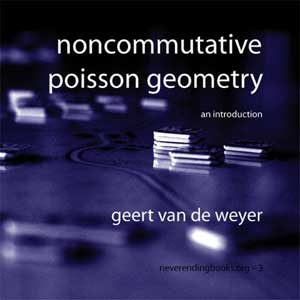A few
days ago, Ars Mathematica wrote :
Alain Connes and Mathilde Marcolli have posted a
new survey paper on Arxiv A walk in the
noncommutative garden. There are many contenders for the title of
noncommutative geometry, but Connes’ flavor is the most
successful.
Be that as it may, do
not print this 106 page long paper! Browse through it
if you have to, be dazzled by it if you are so inclined, but I doubt it
is the eye-opener you were looking for if you gave up on reading
Connes’ book Noncommutative
Geometry…. Besides, there is much better
_Tehran-material_ on Connes to be found on the web : An interview
with Alain Connes, still 45 pages long but by all means : print it
out, read it in full and enjoy! Perhaps it may contain a lesson or two
for you. To wet your appetite a few quotes
It is
important that different approaches be developed and that one
doesn’t try to merge them too fast. For instance in noncommutative
geometry my approach is not the only one, there are other approaches
and it’s quite important that for these approaches there is no
social pressure to be the same so that they can develop
independently. It’s too early to judge the situation for instance
in quantum gravity. The only thing I resent in string theory is that
they put in the mind of people that it is the only theory that can
give the answer or they are very close to the answer. That I resent.
For people who have enough background it is fine since they know all
the problems that block the road like the cosmological constant, the
supersymmetry breaking, etc etc…but if you take people who are
beginners in physics programs and brainwash them from the very start
it is really not fair. Young physicists should be completely free,
but it is very hard with the actual system.
And here for some (moderate) Michael Douglas bashing :
Physicists tend to shift often and work on the
last fad. I cannot complain because at some point around 98 that fad was
NCG after my paper with Douglas and Schwarz. But after a while when
I saw Michael Douglas and asked him if he had thought more about
these problems the answer was no because it was no longer the last
fad and he wanted to work on something else. In mathematics one
sometimes works for several years on a problem but these young
physicists have a very different type of working habit. The unit of
time in mathematics is about 10 years. A paper in mathematics which is
10 years old is still a recent paper. In physics it is 3 months. So
I find it very difficult to cope with constant
zapping.
To the suggestion that he is the
prophet (remember, it is a Tehran-interview) of noncommutative geometry
he replies
It is flattering but I don’t think
it is a good thing. In fact we are all human beings and it is a
wrong idea to put a blind trust in a single person and believe in
that person whatever happens. To give you an example I can tell you
a story that happened to me. I went to Chicago in 1996, and gave a
talk in the physics department. A well known physicist was there and
he left the room before the talk was over. I didn’t meet this
physicist for two years and then, two years later, I gave the same
talk in the Dirac Forum in Rutherford laboratory near Oxford. This
time the same physicist was attending, looking very open and convinced
and when he gave his talk later he mentioned my talk quite
positively. This was quite amazing because it was the same talk and
I had not forgotten his previous reaction. So on the way back to
Oxford, I was sitting next to him in the bus, and asked him openly
how can it be that you attended the same talk in Chicago and you
left before the end and now you really liked it. The guy was not a
beginner and was in his forties, his answer was “Witten was seen
reading your book in the library in Princeton”! So I don’t want
to play that role of a prophet preventing people from thinking on
their own and ruling the sub ject, ranking people and all that. I
care a lot for ideas and about NCG because I love it as a branch of
mathematics but I don’t want my name to be associated with it as a
prophet.
and as if that was not convincing
enough, he continues
Well, the point is that what
matters are the ideas and they belong to nobody. To declare that
some persons are on top of the ladder and can judge and rank the
others is just nonsense mostly produced by the sociology (in fact by the
system of recommendation letters). I don’t want that to be true in
NCG. I want freedom, I welcome heretics.
But please, read it all for yourself and draw your own conclusions.
Leave a Comment